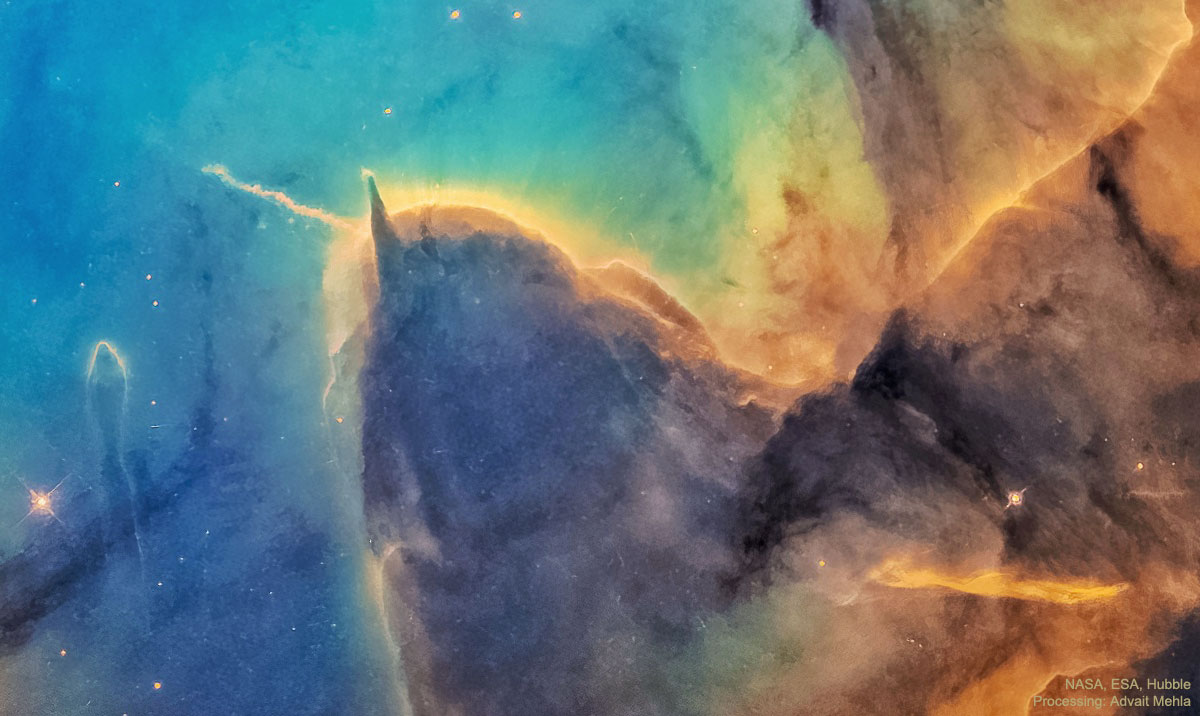2020年12月22日
Trifid Pillars and Jets
Image Credit: NASA, ESA, Hubble Space Telescope, HLA; Processing: Advait Mehla
Explanation: Dust pillars are like interstellar mountains. They survive because they are more dense than their surroundings, but they are being slowly eroded away by a hostile environment. Visible in the featured picture is the end of a huge gas and dust pillar in the Trifid Nebula (M20), punctuated by a smaller pillar pointing up and an unusual jet pointing to the left. Many of the dots are newly formed low-mass stars. A star near the small pillar’s end is slowly being stripped of its accreting gas by radiation from a tremendously brighter star situated off the top of the image. The jet extends nearly a light-year and would not be visible without external illumination. As gas and dust evaporate from the pillars, the hidden stellar source of this jet will likely be uncovered, possibly over the next 20,000 years.
Growing Gallery: Notable images of the Great Conjunction submitted to APOD
Tomorrow’s picture: open space
三叶星云的气柱与喷流
影像提供: NASA, ESA, Hubble Space Telescope, HLA; 影像处理: Advait Mehla
说明: 尘埃柱其实是星际山峰。它们能残存下来,主要是因为它们的密度比周围高,不过在恶劣的环境里,它们还是会慢慢的受到侵蚀。在张主题照片里,可以看到三叶星云(M20)内的庞大气柱之顶端,有一根上指的小柱子和一道喷向左方的不寻常喷流。照片里的光点,则是刚诞生的小质量恒星。影像上缘之外,有一颗极为明亮的恒星,其强烈的辐射,正缓缓剥掉小柱子顶部的恒星所吸积的气体。喷流绵延将近1光年长,不过如果没有外部光源的照亮,应该是不得见。随着气柱的气体和尘埃持续蒸发,可能在接下来的20,000年里,喷流的源头可能就会外露。
成长的画廊:提交给APOD的大近合的著名图像
明日的图片: open space



